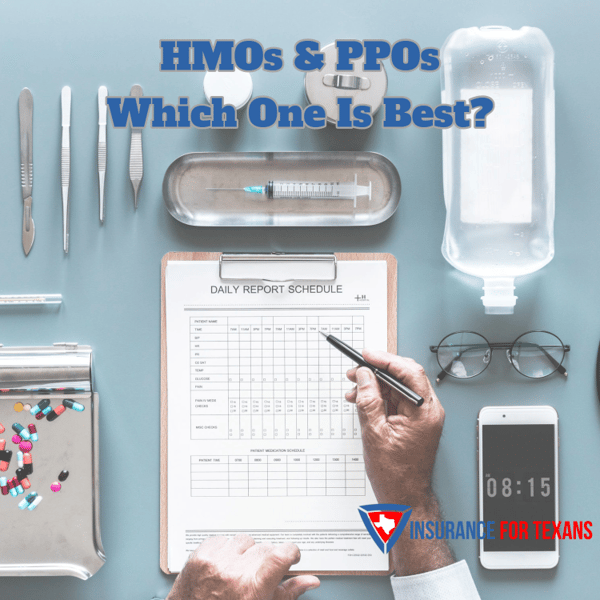It seems like over the past few weeks, the phone calls have started to pick up around health insurance options. One of the most prominent questions is does catastrophic health insurance exist in Texas? During the last few months of any year Texans are confronted with re-enrolling in their health insurance plans and looking for options. So is catastrophic coverage even an option?
YES! Catastrophic Health Insurance Does In Fact Exist In Texas!
Before we go down a brief rabbit hole about the story of health insurance plans, click here to skip ahead to where we simply describe how a catastrophic health plan can function in Texas saving thousands of dollars for everyday Texans.
With that out of the way, let's do a quick rewind and tell the story about health insurance in Texas. Yes, we have catastrophic health coverage today. But the story of the process will help us understand how we got to where we are now late in 2019!
In a time not that long ago, health insurance in Texas was there to protect you when the proverbial stuff hit the fan. This was a time prior to urgent care centers, PPO Networks, and Emergency Rooms treating all forms of conditions. Texans tended to have a relationship of some sort with their Primary Care Physician (PCP) and only used specialists and hospitals for large items. Simpler times if you will. Back then, you just made a cash payment for your primary care visits, and went on your way. You only messed with the health insurance company when it was BIG STUFF.

During the 1980's we saw the advent of HMOs (Health Maintenance Organizations) as the insurance companies tried to find a new way to package insurance and keep folks healthy. They felt if they kept everyone in a contained network that they could control the costs of care in a more efficient fashion. They also pushed preventive care to head off problems prior to them becoming a bigger issue. It was not a Texan's idea as it started elsewhere in the country, but it eventually moved in our direction.
This change to HMOs brought the Primary Care Physician into the realm of insurance payments rather than receiving cash from patients. The PCPs liked a steady stream of patients and the revenue that came with them. The insurance companies liked the ability to direct all activity. And the patients were promised not to pay much in out of pocket spending beyond their monthly premiums. While it sounded like a win-win situation for all sides, the insurance companies then figured out this wasn't such a good thing for them financially. All the while the patients and doctors became frustrated with referrals and in-network constraints for what was previously routine medical care. Texans like our freedom! What can we do???
So the 1990's brought change in the form of the PPO Network. The push back on the health insurance companies' HMO medical plan was the invention of the Preferred Provider Network option. The PPO. The insurers still wanted to keep a network for patients to stay inside of so that they could attempt to control reimbursements to doctors for visits, keep an eye on patients and their care, and attempt to share costs with those patients. So they, along with the hospital based health systems that the doctors were slowly becoming a part of, began negotiating and creating a network of preferred providers that their patients should see for their medical care. In exchange for this, the doctors and health systems were granted payment levels in exchange for agreeing to set rates and being listed in the network for emergency care, preventive services, and other medical costs. The insurers invoked "co-pays", deductibles, and co-insurance on the patients so that they had some incentive to control usage for covered health care services as well. The caveat was that if you strayed out of network, your prescribed benefits went down and your out of pocket costs went up. The networks became the key and the small independent practice physicians started disappearing quickly as they lost negotiating power in the sea of systems.
Why Did The Independent Practice Physicians Disappear?
The network of doctors and facilities became key for the insurers, and subsequently for the insureds as well. As the patients became entrenched in this idea that a trip to the PCP should cost either nothing or a very small co-pay, the physicians became pieces of the large health networks so that they could get the best payments from the insurance companies and have access to their patients from the PPO Network. As this consolidation occurred, new problems began to arise.
Cost Problems With Health Insurance
The costs of health insurance began to escalate at unheard of levels due to the vast increase in the processing of claims from all of the interactions between patients and providers and physicians. When insurance companies were not involved in your visit to a doctor's office, the bill was settled between you and your doctor which was a relatively simple process. The health insurance company did not care or have insight and so the process of payment was simple. As the health insurance companies began adjudicating all of the individual doctor visits, labs performed, or other lower level activities involved with routine care of a patient, they had to staff for those claims. Staff needs management. As both staff and management grow, middle management is needed. This effect was also compounded from regulation from the government in the form of things like HIPAA. The onus for payroll at a health insurance company ballooned to unprecedented levels. And that payroll brought massively escalated costs to those previously small level doctor visits.
The Affordable Care Act
As the costs and out of pockets continued to sky rocket, the Affordable Care Act was signed into law in 2010. The politicians had had enough and put laws in place that they hoped were a remedy to complaints of health insurance out of pocket spending. These remedies brought another round of change to your health care and it's delivery of payments. There were minimum standards of coverage known as essential health benefits that now had to be accounted for in your plans. These standards generated by health care reform were found on new formed exchanges where health insurance that was required by law could be bought. The insurers had to start making changes as they had to cover pre-existing conditions and all manner of things including preventive services that cost them a lot of money that was not required in previous policies. Those changes ultimately resulted in escalating premiums, larger deductibles, and massive out of pocket costs for covered health care services. To many previously uninsured Texans, it was a God send. To many others, it was taking a bad situation and making it worse. As the angst built through the decade, the politicians took actions again to change up the laws in 2018. Which brings us to where we are today!
Whew! That was a long story to say that those law changes in 2018 made it so that Texans could buy Catastrophic Health Insurance without penalty from the government. It meant that those who wanted things a different way, an older way actually, could choose to do things on their own terms. And in this change, you no longer needed a financial hardship to obtain catastrophic coverage that only covered catastrophic health care spending.
How Does Catastrophic Insurance Work?
In Texas, if you are comfortable paying for your own preventive care, you can obtain a catastrophic health plan that operates outside of the health care reform guidelines for minimum essential health benefits. These catastrophic plans leverage three individual policies as a cohesive plan to cover your out of pocket spending on big ticket items and are not limited by enrollment periods.
The Critical Illness portion of the catastrophic health insurance policy is designed to provide protection around major illnesses or hospitalizations. These would include things like Cancer, Stroke, Heart Attacks, Gastrointestinal Illnesses, etc. The policy will cover your treatments and potentially surgeries for new critical illness events.
2. Accident
The Accident portion of the catastrophic health insurance policy is designed to provide protection around those accidental things that occur and rack up big medical bills from emergency services. Think broken legs from crazy mountain bike crashes or falling off of your roof while hanging the Christmas lights. These things can result in large Emergency Room bills or even hospitalizations.
The Hospital Indemnity portion of this catastrophic health insurance policy is designed to help cover deductibles and coinsurance costs incurred with either of your first two line items. This will pay you a flat dollar amount per day that you're in the hospital or even for surgery. It is a limited benefit plan that can have a big effect on your out of pocket spending.
How Are Claims Paid?
The Critical Illness and Accident portions of this health insurance coverage generally work off of a deductible amount being paid by the insured first. At that point, the remainder of the coverage is going to be split between the insurance company and the patient based off of a coinsurance provision. That means after the deductible is satisfied, the insurance company will pay 70%, 80%, 90%, etc of the remaining billable amount up to the policy maximum. The other 30%, 20%, 10%, etc is ultimately the responsibility of the insured.
Remember that Hospital Indemnity portion of the policy we mentioned above? This is where it comes into play. Since it pays a flat dollar amount per day in the hospital or for surgery, those funds can be applied both the deductible and coinsurance costs incurred by the patient. If the policy plan is robust enough, the total bill could potentially be covered by the indemnity plan for you.
What Do I Do About Doctor Visits?
Since the catastrophic plan is not involved with your regular doctor visits, you will merge into a cash pay world for health care. It sounds scary at first. Take a deep breath and look around though. You will quickly realize that there are doctors who operate completely outside of the insurance system. Crazy, right? These doctors will have very affordable fees for the services that they provide directly to you and your family. Their goal is to make sure that you can be taken care of at the best price possible. And remember, there is no network check to perform or lose. You and your doctor decide if you want to work together.
What About Costs?
The best news of all here is that the premiums for catastrophic plan are a fraction of what is now considered traditional health insurance. When people start comparing prices between catastrophic health insurance plans and the current individual health insurance offerings available in the open market they are shocked at how much more affordable the catastrophic health insurance coverage really is for them.
Additionally, many of the families have begun to leverage Direct Primary Doctors to go with these plans. These doctors construct private contracts between their practice and these families to provide access directly to the doctor on an on-going basis. This plan generally involves a small monthly cost, but provides round the clock access in many cases. It creates a deep relationship between Doctors and Patients so that the greatest of care can be provided. These kinds of doctors can be located on this map. What many Texans have begun to discover is that combining catastrophic health insurance with a Direct Primary Care physician has led to a much better health care model while putting tangible money back in their pocket.
Can I Talk To Some One?
If you are curious, not sure about your options, or worried about a pre-existing condition getting in the way, we would be happy to help you sort out your options. The agents at Insurance For Texans love helping our neighbors. We will tell you straight up if it just doesn't work for you. We strongly encourage people taking the time to educate themselves rather than feeling hopeless thinking that there is only one path to health insurance success. If you would like to speak with one of our agents, click the button below to schedule a consultation.





